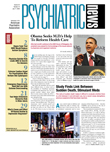With the specter of Alzheimer's disease or other types of dementia threatening an aging American society, researchers are urgently looking for ways to determine who is going to develop such illnesses.
For example, Deborah Barnes, Ph.D., an assistant professor of psychiatry at the University of California, San Francisco, and the San Francisco Veterans Affairs Medical Center, and colleagues set out to develop a late-life dementia checklist. They wanted an instrument that could reasonably stratify adults aged 65 or older into those with a low, moderate, or high risk of developing dementia within six years. And that is what their new tool does, they reported online May 13 in Neurology.
Barnes and her coworkers focused on more than 3,000 individuals aged 65 or older who had no sign of dementia and who had been evaluated for many factors known to influence or suspected of influencing dementia susceptibility risk—for example, demographic variables, medical conditions, physical-performance measures, lifestyle factors, genetic predisposition, or the number of prescription medications used. The researchers followed these individuals for six years to see which ones developed Alzheimer's or another form of dementia—480 (14 percent) did—and then looked to see which of the known or possible dementia risk factors would have predicted these individuals getting Alzheimer's or another kind of dementia. Finally they assigned points to the most predictive factors and developed a late-life dementia risk checklist based on the assigned points.
The checklist included poor cognitive test performance (2-4 points), low body mass index (2 points), older age (1-2 points), one or more copies of the APOE e4 gene variant (1 point), white matter disease as revealed through a MRI brain scan (1 point), ventricular enlargement as revealed through a MRI brain scan (1 point), internal carotid artery thickening as revealed through an ultrasound scan (1 point), a history of bypass surgery (1 point), slow physical performance based on time to put on and button a shirt (1 point), and lack of alcohol consumption (1 point). The checklist had a maximum possible score of 15 points.
This checklist, the researchers reported, stratified subjects into those with low, moderate, or high risk of developing dementia. Whereas only 4 percent of subjects with low scores developed dementia over a six-year period, 23 percent of subjects with moderate scores and 56 percent of subjects with high scores did. Predictive accuracy did not differ by gender, race, or education.
“It is important to caution that the factors we identified are predictive, but not necessarily causal,” Barnes explained to Psychiatric News. “[For example,] lack of alcohol consumption is likely to be a marker for other things, such as worse health status [or] use of medications for which alcohol consumption is contra-indicated....” A low body mass index could be an indication that the disease is already under way (Psychiatric News, May 15).
Such a checklist, Barnes and her colleagues wrote in their report, could have several uses. It could reassure concerned older individuals whose dementia risk is low or moderate. It could encourage concerned older individuals whose dementia risk is high to seek treatment at the earliest possible stage of disease or to participate in a clinical trial exploring new intervention or prevention strategies for dementia.
The next step will be to develop a briefer dementia risk checklist, Barnes told Psychiatric News. “We'd like to develop a tool that could be administered in a physician's office in 10 minutes at low cost.”
The study was funded by the National Institutes of Health and the University of California, San Francisco's Clinical and Translational Sciences Institute.
An abstract of “Predicting Risk of Dementia in Older Adults” is posted at<www.neurology.org/cgi/content/abstract/WNL.0b013e3181a81636v1>.▪
